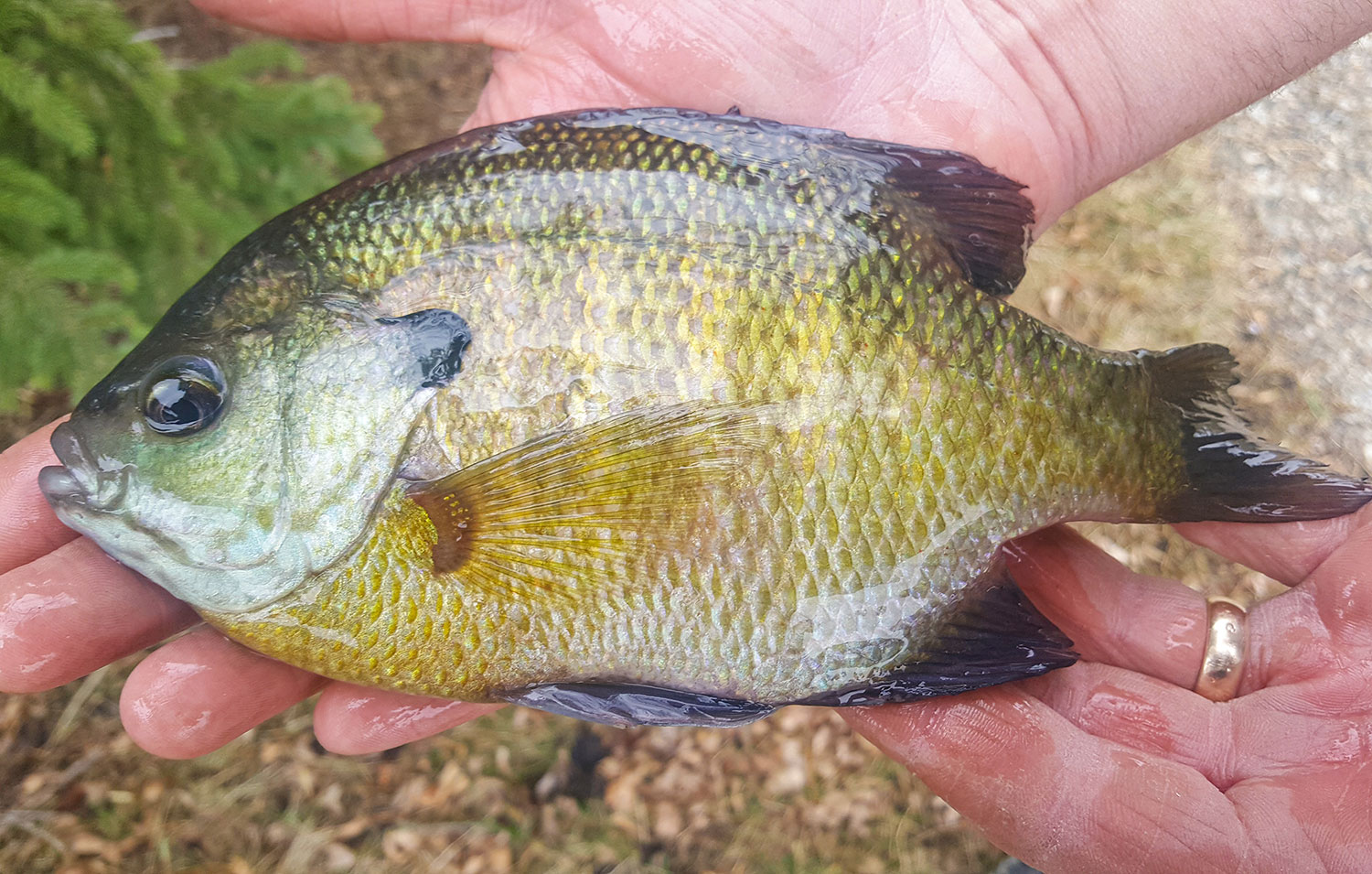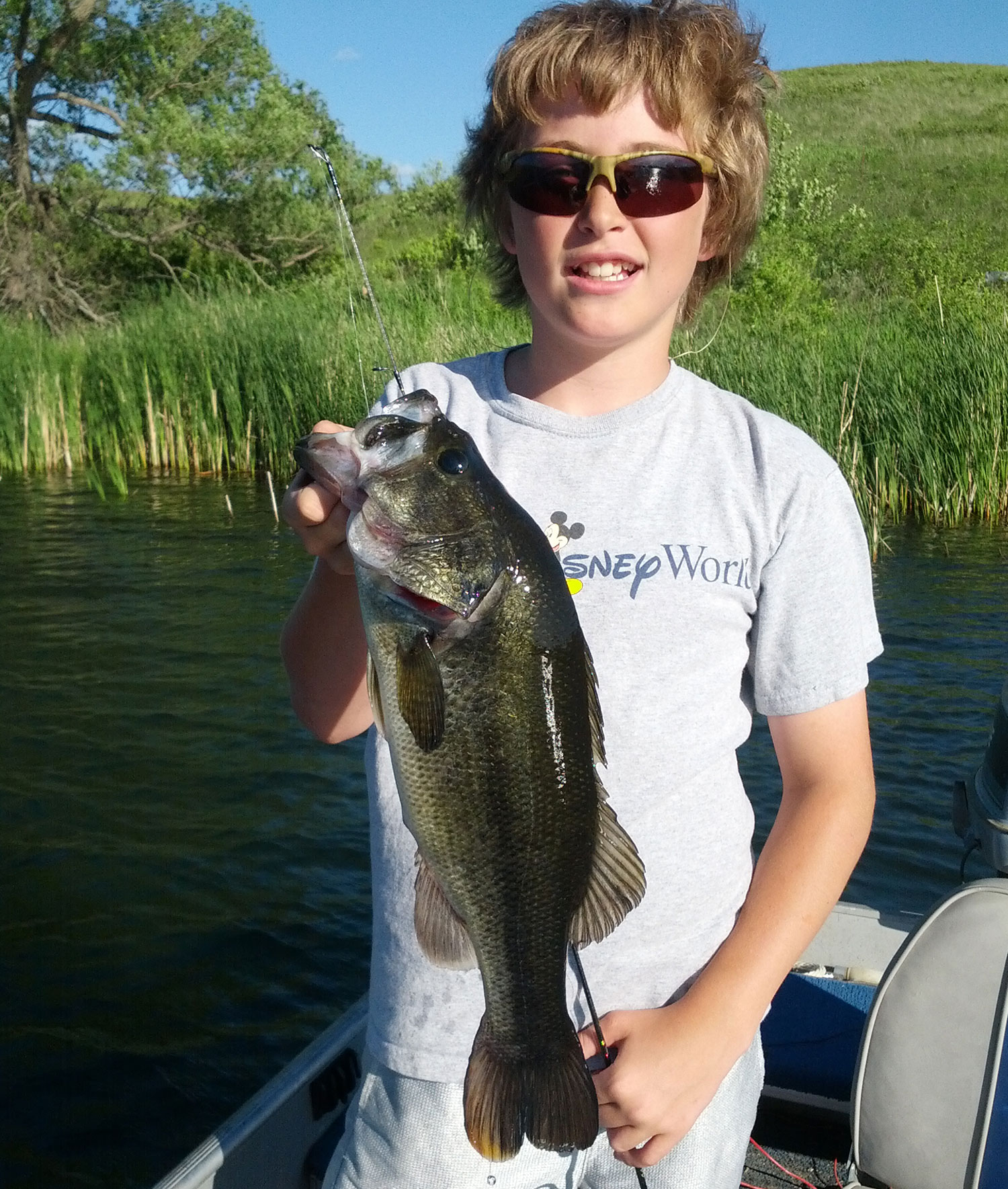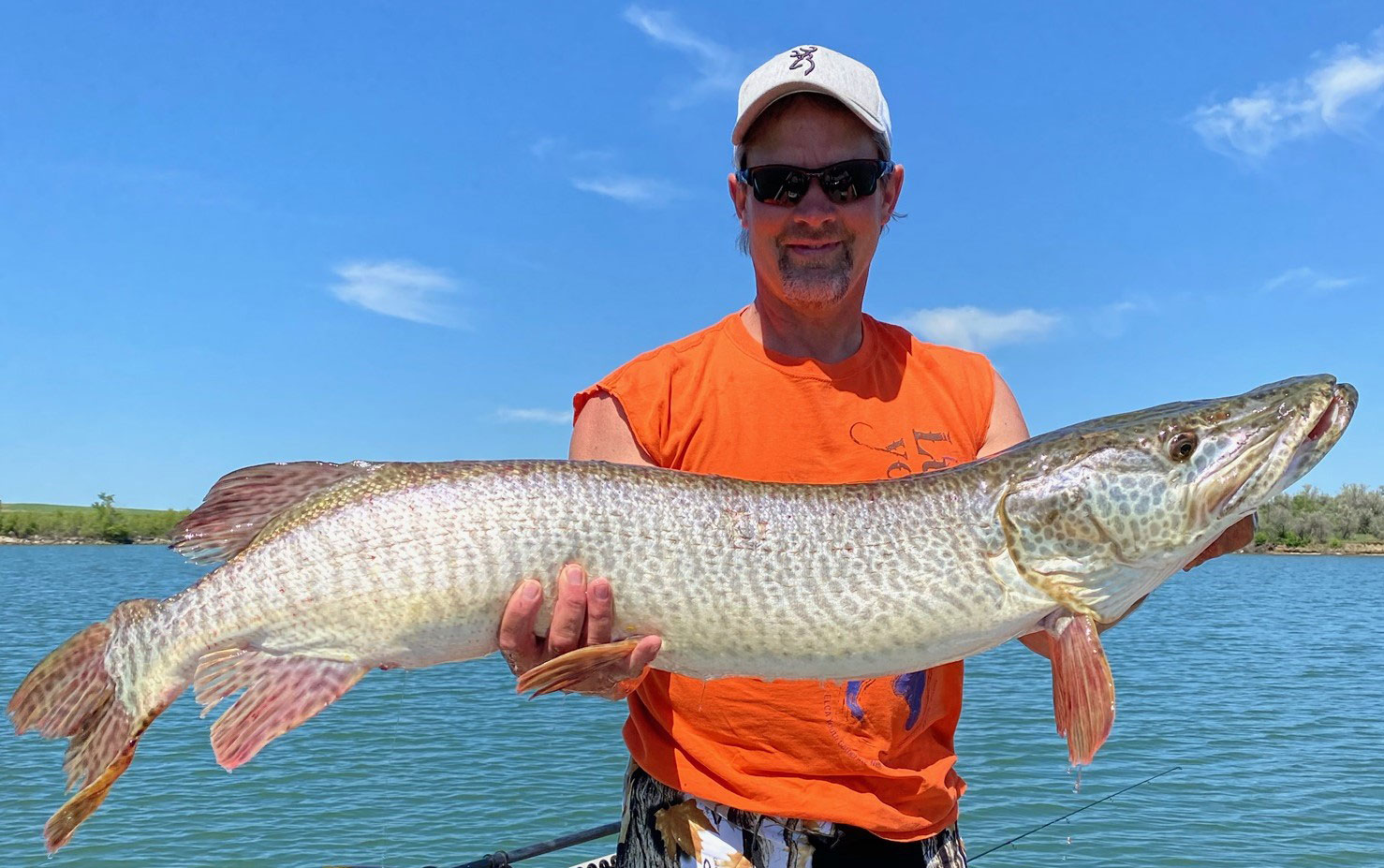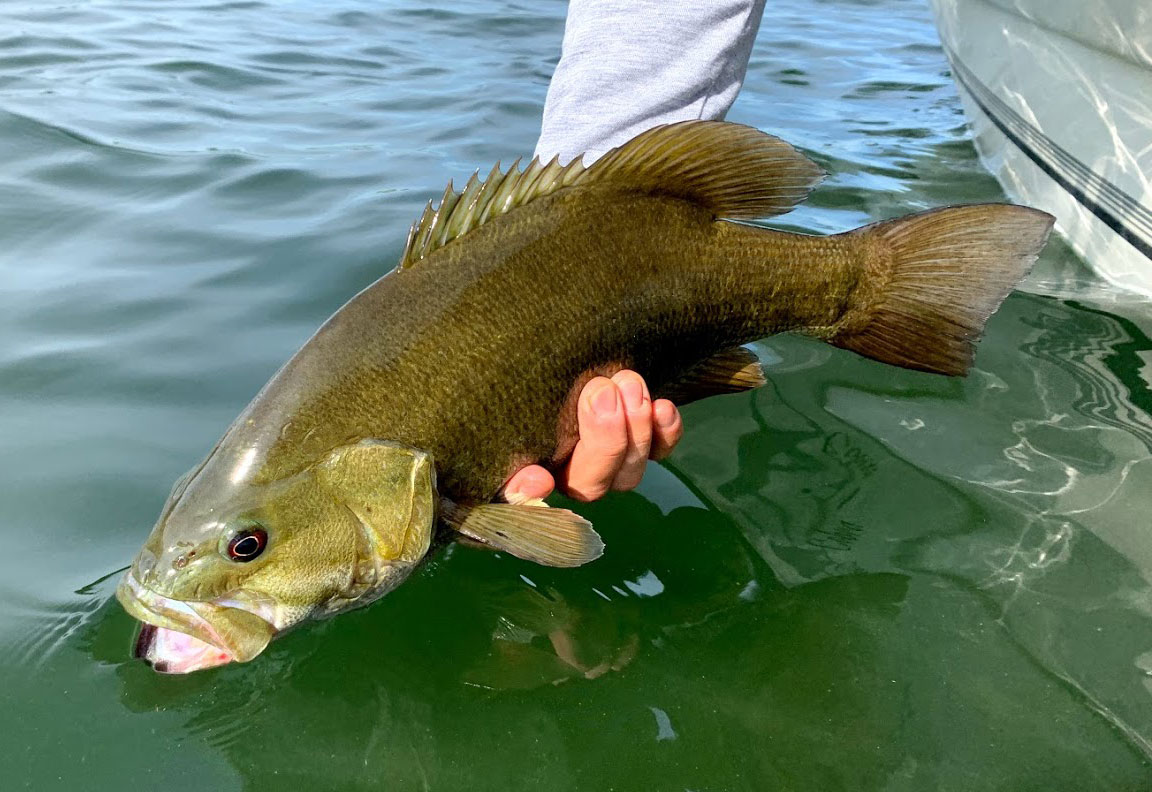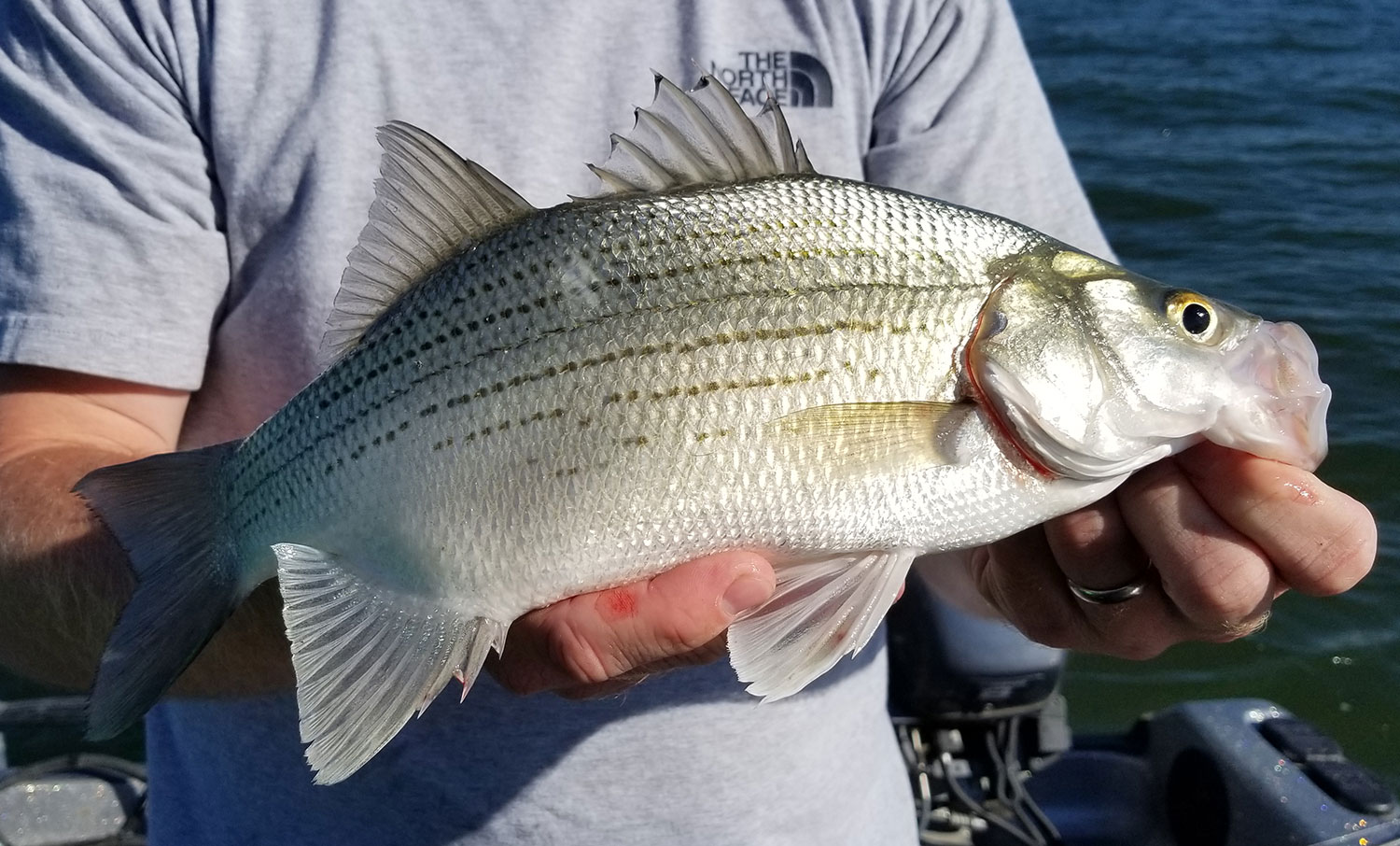When it comes to fishing North Dakota, most anglers automatically think of chasing walleye at lakes Sakakawea, Oahe and Devils Lake, or on the many prairie waters that hold the state’s most popular fish. Then again, maybe they consider casting to northern pike found most everywhere or jigging for yellow perch in winter through the ice.
But North Dakota offers so much more. Diverse fishing opportunities abound from paddlefish in northwestern North Dakota to trophy cats in the Red, to dandy white bass in Devils Lake. For years, North Dakota Game and Fish Department fisheries biologists and other staff have shared many of these somewhat hidden jewels with the inquiring fishing public. Yet, North Dakotans generally target only walleye, pike and/or perch.
In an effort to diversify one’s angling portfolio, perhaps it’s time to search out other prospective fisheries. To that end, the following eight narratives provided by Department fisheries biologists introduce readers to some of these “other” fish species and highlight the many opportunities that await a bobber, Daredevil or jig.
Give them a try.
- GREG POWER is the Game and Fish Department’s fisheries chief.
Bluegill
I grew up with bluegills. When I was young, I would often get up early on summer mornings and quietly sneak out of our lake home down to the dock, always to be greeted by sunfish. Though bass were my main sight-fishing quarry, it was bluegill, with their curiosity and pet-like behavior, that passed the time and provided entertainment between marauding schools of bass.
Bluegills prefer the company of one another and typically congregate in schools from as few as three or four fish, to more than 50. They are largely insect eaters, though bigger fish occasionally will take small minnows. Larger fish can be found occasionally in open water suspended some distance from cover. During these times they are usually actively feeding on plankton. However, most often bluegills can be found in less than 6 feet of water near aquatic vegetation, particularly during the warm water period. It is here that they are most adapted as their laterally compressed bodies allow them unique maneuvering capabilities within weed beds where they find food, shade during the hottest days of summer and cover from predators such as pike and bass.
Bluegills (aka brim, sunfish, sunnies) typically don’t exceed 10 inches in length in North Dakota, but they are scrappers, and a mess of bluegills make fine table fare. Although, there aren’t a lot of lakes in the eastern half of the state that harbor just the right ingredients to make for prominent bluegill fisheries. Yet, as you travel west, bluegill fishing opportunities increase considerably.
Good bluegill lakes typically contain great amounts of aquatic insects, good water quality (lower salinities), with moderately high densities of vegetation. Additionally, a thermal refuge (with cover) during the cold winter months is important. Young bluegills are most vulnerable to a lack of any of the aforementioned and most of the young simply do not survive their first winter in North Dakota.
Where abundant, bluegills are one of the easiest freshwater fish to catch. An angle worm suspended on a hook below a bobber is one of the best presentations and has likely accounted for more bluegill than any other method. Simply put a worm (or just a piece) on a No. 10 hook attached to 6- to 8-pound test line with a split shot weight 2-3 inches below a small bobber. Cast near shore to pockets in weed beds, or a shady spot along the shoreline on a warm summer day. In winter, focus on deeper water, using a small, weighted hook tipped with a maggot or “spike.” Use light line (2- to 4-pound test) for easier deployment. Mornings are usually best in summer and afternoons during the winter.
- Brandon Kratz, district fisheries supervisor, Jamestown
Channel Catfish
Channel catfish are a riverine fish native to the Missouri and Red rivers in North Dakota. They are also common in some larger tributaries such as the Sheyenne River and Heart River. They have been stocked in many smaller lakes, especially community fisheries throughout North Dakota.
The Red River population gets the most attention as many very large catfish are caught there every year. The farther north you are, the better the fishing, with Drayton Dam being a popular spot in North Dakota. There is a daily limit of five with only one over 24 inches in the Red River. There are many catfish baits, but most anglers in the Red River use cut bait or live white sucker.
Catfish can be found everywhere in the Missouri River. The Garrison Dam Tailrace is a popular spot for catfishing and there aren’t many large catfish caught here, but you can catch them up to 10 pounds and you could easily catch over 100 a day from boat or shore. There is no limit to the number you can keep in the Missouri River. Popular and effective baits for catching catfish in the Tailrace are rainbow smelt or night crawlers.
The state record channel catfish isn’t from any of the native populations. That honor belongs to Moon Lake (Barnes County) where Tina Willis caught a 42-pound monster in 2009. Dickinson Reservoir is also known to produce 20-plus-pound catfish. Heart Butte Reservoir has abundant catfish up to 10 pounds and many community fisheries get stocked annually and provide shore-fishing opportunities for anglers of all ages. Catfish are aggressive, will bite on many baits and put up a good fight, which makes them a popular fish for these small lakes. Check the Game and Fish Department website for catfish stocking near you.
- Jeff Hendrickson, retired district fisheries supervisor, Dickinson
Crappie
North Dakota is home to two crappie species. Populations of black crappie are most common and have a wider distribution than white crappie. Like other members of the sunfish family, males provide parental care to offspring. In May, mature males use their fins to make shallow circular nests, often in water less than 8 feet deep. After spawning, males provide protection to the eggs and newly hatched fry until they swim off to start their own lives. By winter, young-of-the-year can reach 3 inches in length.
Crappies are omnivores and feed on a wide variety of aquatic macroinvertebrates, small fish and even zooplankton. Fine comb-like projections attached to the gills, called rakers, filter zooplankton out of the water, providing a source of food.
North Dakota crappies will often reach lengths of 12 inches. Occasionally, larger fish, 14-17 inches, are present. It is not uncommon for crappies to reach 10 inches after four or five years. In some North Dakota waters, crappies have been reported to live 14 years.
North Dakota is near the northern extent of the black crappies’ continental range. It is not uncommon for young-of-the-year crappies to die in their first winter if subjected to a long period of extreme cold temperatures. However, crappies can be quite resilient to low oxygen conditions, which frequent some North Dakota lakes. Through dissolved oxygen monitoring, we have found that crappie populations can survive short durations of low oxygen stress.
Fishable crappie populations are found in many impoundments throughout the state. Commonly, in these waterbodies, crappies can be found congregated in schools suspended in the stream channel or relating to structure such as submerged trees and vegetation. Several natural lakes, especially in the southern half of the state, are also home to crappies.
Crappies are fun to catch and taste excellent. In spring, they can be targeted in shallow water during spawning. In summer, crappies can be found relating to structure or suspended. Electronics can aid greatly in locating crappie schools during the ice fishing season. Crappies are most active during low light periods of early morning and evening. A night bite can also be quite successful. Crappies can commonly be caught with a vertical presentation such as a small minnow beneath a bobber or jigging small plastics. A slow presentation with a small (1/16-ounce jig) and twister tail can be quite effective at times as well. Jamestown Reservoir has a robust crappie population and several public access locations, making it a good location to target these fish.
- Mike Johnson, district fisheries biologist, Jamestown
Largemouth Bass
Walleye receive the most attention from North Dakota’s anglers by a wide margin. However, when looking at the entire United States, there is no denying largemouth bass are king; and with good reason.
Largemouth bass are widely distributed from coast to coast and border to border, making them a familiar species to many anglers. More importantly, they are known for powerful strikes, a fantastic fight that frequently clears the water’s surface, and can be caught with a multitude of techniques, from twitching top-waters, to deeply retrieved crankbaits and everything in between.
North Dakota lies along the northern range of largemouth bass, leading to slower growth rates and smaller maximum sizes in comparison to our more southerly neighbors. Many of our state’s natural lakes lack gravel bottoms that largemouth bass utilize to build nests for reproduction and/or have salinity levels that are too high for their eggs to survive. Despite these limitations, North Dakota has numerous quality largemouth bass fisheries spread throughout the state.
Nelson Lake in Oliver County is a powerplant cooling reservoir near Center that maintains much warmer water temperatures than other North Dakota water bodies. These warmer waters give the lake’s largemouth bass the opportunity to grow quickly and reach larger maximum sizes, including our current state record largemouth of 8 pounds, 8 ounces.
While the topic of largemouth bass fishing in North Dakota certainly begins with Nelson Lake, it definitely does not end there. Other excellent largemouth fisheries can be found, primarily in smaller impoundments.
- Paul Bailey, district fisheries supervisor, Bismarck
Muskie
Muskie management in North Dakota would fall on the lower end of the scale when looking at the number of overall fish stocked compared to other species, such as walleye and northern pike. However, in several North Dakota lakes scattered around the state, muskie management has been occurring for many decades.
During the past two decades, both tiger and/or pure muskies have been stocked in 17 North Dakota waters. In recent years, Lake Audubon, Lake Ashtabula and Garrison Diversion Lakes (New Johns Lake and East Park Lake) have received the bulk of the stocked fish.
Most of the muskies stocked in North Dakota water bodies in recent years are tiger muskie. Tiger muskie are a cross between a female pure muskie and male northern pike and are usually unable to reproduce. Tigers are stocked in lakes where fisheries managers want to better control the number of fish in the system, since they typically can’t reproduce on their own.
For muskie to reach a large size, they need good-sized forage, such as cisco, white sucker or carp. In the right environment, muskie can grow fast and reach very large sizes compared to many other fish species in North Dakota. In Lake Audubon, cisco provide a good, larger-sized prey item. Larger reservoirs, such as Lake Audubon, have fairly deep, cool summer water that muskie can move to since they can’t tolerate very warm temperatures.
The current state record muskie was caught in New Johns Lake in 2007 and weighed 46 pounds, 8 ounces. Fishing regulations require a muskie to be 48 inches or longer for an angler to keep the fish and the daily limit is one. Anything less than 48 inches must be released, however, many avid musky anglers practice catch-and-release, even if the fish is over 48 inches long. Lakes that are managed for muskie are restricted from darkhouse spearfishing. The reason being that it could be difficult for spearers to tell the difference between a muskie and northern pike, especially in cloudy water.
The muskie has been an exciting addition to fishing opportunities in some North Dakota lakes. With the recent expansion of muskie opportunities, anglers don’t have to travel as far for a chance to catch one. I was fortunate enough to tie into a 45-inch muskie on light tackle, while casting crankbaits for smallmouth bass in Lake Audubon a while ago and found the experience to be exciting and one I won’t forget for a long time.
- Jason Lee, district fisheries supervisor, Riverdale
Smallmouth Bass
Smallmouth bass are members of the sunfish family, which in North Dakota also includes largemouth bass, rock bass, two species of crappie and several species of sunfish. Smallmouth bass are also commonly called “smallies” and most closely resemble largemouth bass but are distinguished by a more streamlined body, bared markings on the side, red eye and a mouth that does not extend beyond the eye.
Smallmouth bass are native to the upper and middle Mississippi River drainages but have been introduced to various waters in North Dakota and throughout the United States. While a very popular sportfish throughout much of their range, smallies fall far down the preference list among most North Dakota anglers.
Smallmouth bass generally prefer clearer waters, with an abundance of gravel, rock and boulder substrates. In North Dakota they are most abundant in larger reservoirs and streams with better water quality. Smallmouth bass are carnivorous and feed primarily on crayfish, insects and small fishes. They are aggressive and can be caught using a wide variety of techniques. They are also scrappy fighters, making them a very sporting fish to pursue.
In North Dakota, most smallmouth bass are caught incidentally by anglers targeting walleye and most techniques used for walleye work well for smallmouth. Additionally, at certain times of the year smallmouth readily take small topwater presentations, which is an especially exciting way to pursue them.
One of the great things about most smallmouth bass waters in North Dakota is that they are readily accessible to shore-bound anglers. Considering their affinity to rocks means they are often found near shore habitat along windblown rocky shorelines, rip-rapped areas near developments and lake access sites, bridge abutments and the faces of dams.
Management of smallmouth bass in North Dakota has reached a level of what could be considered “mature.” They have been introduced to most of our suitable water bodies over time. In many locations, smallmouth bass have done well and established good self-sustaining, natural reproducing populations. As such, the Game and Fish Department no longer has the need to produce smallmouth bass fingerlings for supplemental stocking.
While North Dakota has many high-quality smallmouth fisheries, relatively few anglers target them and even fewer harvest those that they catch. For example, creel surveys on Lake Sakakawea have shown that anglers release over 90% of all smallmouth bass they catch. Given our excellent populations and virtually no harvest of caught fish, we’ve been able to increase the daily limit of smallmouth bass allowed to anglers with no risk to the fisheries.
- Dave Fryda, Missouri River System supervisor, Riverdale
Trout
For many years, anglers fishing North Dakota waters have been fortunate to have excellent fishing for a variety of sportfish species, such as walleye, northern pike, yellow perch, trout, the list goes on. Of course, walleye, perch and pike get most of the attention, but the other species round out what are some very desirable and diverse fishing opportunities for all anglers. Now throw in the hard-fighting, beautiful trout species and you have the frosting on the cake.
Trout are not native to North Dakota and belong to the salmon family of fishes. Trout species are a coldwater sportfish species that are most comfortable in cooler waters, so they are most active and bite best in fall, winter and spring. Since trout species do not reproduce naturally in North Dakota, they are stocked annually in many of our lakes, rivers and reservoirs to provide more fishing opportunities.
As far as habitat types, trout are stocked in a large river like the Missouri as well as a small river like the Turtle. Trout are also stocked in natural lakes and smaller reservoirs, along with many community fishing ponds. Rainbow trout, brown trout and cutthroat trout have all been stocked in recent years. In 2021, rainbow trout were stocked in 56 different waters, compared to seven waters for brown trout and seven waters for cutthroat trout.
In some cases, trout stockings are on a put-and-take basis. Meaning: they are stocked to provide spring through fall fishing opportunities but likely will not overwinter due to winterkill caused by low dissolved oxygen levels. This applies to many of our community ponds and other shallow water bodies. Since trout are stocked at a larger size in the spring, they are immediately of catchable size. This bodes well for kids who ride their bikes to the pond for some fishing. Ryan Pond, North Woodhaven Pond, Dickinson Dike, Owls Pond, Little Britches Pond and Watford City Pond are examples of some community fishing ponds. Other trout stockings are in waters that can overwinter fish during less severe winters. Hooker and Strawberry lakes in the Turtle Mountains are good examples and can produce larger trout if they live 3-plus years. Sheep Creek, Blumhardt Dam and Northgate Dam are a sample of other waters that can overwinter trout at times. The Missouri River consistently produces the largest rainbow trout (and other trout species) with a fish over 17 pounds reported in 2021.
Rainbow trout have a special place in my fishing past. As a high school kid from Langdon in the 1970s, there were not a lot of fishing opportunities in the local area. Fortunately, Mt. Carmel Dam was constructed nearby and was stocked with rainbow trout. The fish grew rapidly and soon became beautiful 3- to 5-pound fish. My friend and I would wake up at 5 a.m. and drive there to fish for several hours. We would cast spinners from shore and caught many nice trout. I was very appreciative of the Game and Fish Department’s stocking program. These trout fishing experiences played a big part in deciding to go to college and study fish and wildlife management, which ultimately led to me becoming a long-time Department fisheries biologist.
- Randy Hiltner, district fisheries supervisor, Devils Lake
White Bass
White bass are commonly known as temperate bass and includes species such as the white bass, yellow bass and striped bass. White bass are usually silver in color, with prominent black stripes along their sides, and their eyes are yellow.
White bass spawn in spring in the middle to upper part of the water column as opposed to many other fish that spawn on or near the bottom. White bass can breed prolifically, so populations can withstand harvest, which is partially why daily bag and possession limits in North Dakota and other states tend to be higher for white bass than some other fish species.
White bass can be found in Lake Oahe, Lake Sakakawea and Lake Audubon and the Yellowstone River. They can also be found in a few smaller waters including Lake Ashtabula, Bowman-Haley Dam, Buffalo Lake, Heart Butte Reservoir and Trenton Lake. The most famous white bass water in North Dakota is the Devils Lake system, which also includes Lake Irvine and Stump Lake.
White bass are not native to Devils Lake. The fish in that original stocking found Devils Lake to their liking, survived and reproduced. Devils Lake in particular has a history of producing large white bass in good numbers and is home to the current state record (4 pounds, 10 ounces) caught in 2012.
White bass are a predatory fish, so baits that mimic a small fish or some type of aquatic insect can be effective, as well as live bait, such as a minnow. When actively feeding, they often aren’t picky and strike most any lure small enough for them to eat. However, when they aren’t actively feeding, a more subtle approach, such as a minnow on a small hook, may tempt them into biting.
White bass are a schooling fish, so when one fish is caught, it is likely that more are in the area. On calm days, simply looking for a school of feeding white bass making ripples and splashes on the water’s surface can be a good tactic for locating fish. Fishing along wind-blown shorelines can also produce good catches.
For successful anglers, white bass can provide good table fare. They do have some red meat that can have a strong taste, but this can be easily trimmed from the fillets or left on the skin by “cheating” the fillet knife up above the skin a bit during filleting. The rest of the meat is white and flakey like many other fish and has good flavor.
- Todd Caspers, district fisheries biologist, Devils Lake
Lakes to Try
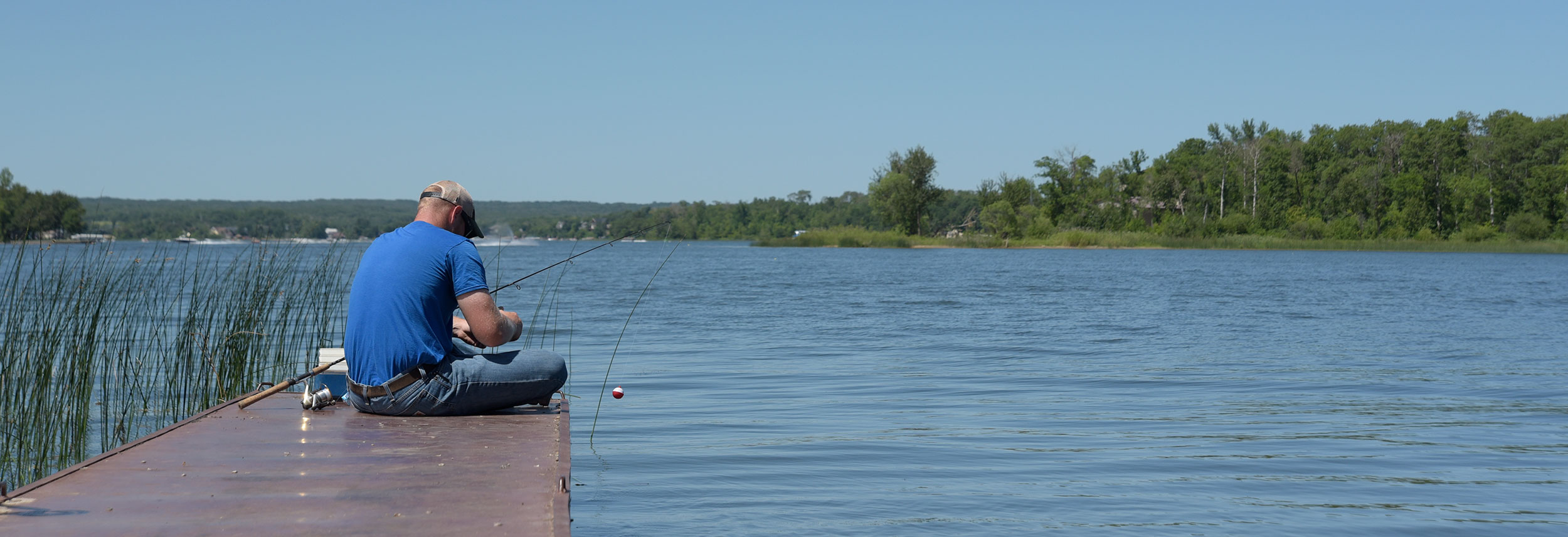
What follows is not a comprehensive list of waters that hold the fish species detailed in this piece. Rather, it’s a sampling of lakes scattered around the different regions of the state that North Dakota Game and Fish Department fisheries biologists recommend anglers give a shot if they’re enticed to fish for smallmouth bass, rainbow trout, and so on.
BLUEGILL
- Smishek Lake and Northgate Dam (Burke County) – Both lakes have good populations of bluegill and the potential for big fish.
- Sheep Creek Dam (Grant County) – Small reservoir near Elgin where bluegill are mostly in the 8-inch range, but usually abundant.
- Camels Hump Lake (Golden Valley County) – Small reservoir near exit 10 on I-94. Bluegill abundant and 9-inch fish common.
- Lake Metigoshe (Bottineau County) – Supports an abundance of bluegill, with a wide range of sizes. Anglers have the potential to catch a large bluegill.
- Nelson Lake (Oliver County) – Has warmer than normal year-round lake temperatures compared to other lakes in North Dakota because it’s located adjacent to a power plant. The warm temperatures provide a good environment for bluegill, a warmwater species. Bluegill can be caught along the shoreline in many areas, as well as from the two metal fishing piers.
- Harmon Lake (Morton County) – A fast-action bluegill fishery known more for numbers of fish than sizes.
- Wood Lake (Benson County) – A smaller, natural lake, with a good population of fish up to about 9 inches. This is a good lake to entertain anglers of all ages, with various baits and lures being effective.
- Lake Upsilon (Rolette County) – Located in the Turtle Mountains, another natural lake with a good bluegill population.
- Pheasant Lake (Dickey County) – Based on the last five years of electrofishing and netting data, this lake has one of the higher bluegill populations in the southeast fisheries district, with decent mean size.
- Deadcolt Creek (Ransom County) – Classic water where oftentimes you can sight-fish for the many quality-sized bluegills that inhabit the reservoir where shore fishing-opportunities abound.
CHANNEL CATFISH
- Trenton Lake (Williams County) and the Little Muddy River – The best two options besides Lake Sakakawea and the Yellowstone and Missouri rivers. Both are connected with the Missouri River, especially during high water events, and can produce good numbers of channel catfish.
- Dickinson Reservoir (Stark County) – Large reservoir near Dickinson. Channel catfish at lower abundance but some exceed 20 pounds.
- Heart Butte Reservoir (Grant County) – Channel catfish abundant in this large reservoir and can exceed 10 pounds.
- Lake Oahe – Possibly North Dakota’s premier channel catfish fishery in terms of numbers. Most of Oahe’s catfish are 2-4 pounds, but larger fish are present.
- Braddock Dam (Emmons County) – Catfish up to 13 pounds present in good numbers.
- Red River – One of the best channel catfish fisheries in the country, with good opportunity for catching keeper-sized fish as well as good trophy potential
- Sheyenne River – Contains an underutilized population of channel catfish, particularly in the middle reaches.
CRAPPIE
- Trenton Lake (Williams County) – A very shallow, old oxbow connected with the Missouri River. The crappie fishery has thrived during high water years on the Missouri River System and there is a good population of nice-sized black and white crappie.
- Heart Butte Reservoir (Grant County) – Black and white crappie moderately abundant in this large reservoir and 1.5-pound fish caught on occasion.
- Dickinson Reservoir (Stark County) – Black crappie moderately abundant and 1-pound fish common.
- Nelson Lake (Olive County) – Has both black and white crappie, with a good number of larger fish. The warm water in the lake provides a good environment for these warmwater species.
- Lake Oahe – Crappie numbers have declined in recent years, but any of Oahe’s large bays still offer an opportunity to land a whopper crappie.
- Homme Dam (Walsh County) – A perennial, consistent crappie fishery, with typically high numbers of fish.
- Jamestown Reservoir (Stutsman County) – Best crappie fishery in the State.
- Lake Elsie (Ransom County) – Crappie tend to be abundant where good shore-fishing opportunities exist.
LARGEMOUTH BASS
- Baukol-Noonan East Mine Pond (Divide County) – A good population of largemouth bass up to 3 pounds.
- Kota-Ray Dam (Williams County) – Good population of largemouth bass, with the potential for a fish over 5 pounds.
- Sheep Creek Dam (Grant County) – Small reservoir near Elgin. Largemouth bass common and there are some 4- to 5-pound fish.
- North Lemmon Lake (Adams County) – Small reservoir near Lemmon, S.D. Largemouth bass common and there are some fish that exceed 5 pounds.
- Nelson Lake (Oliver County) – Largemouth bass abundant and provide a unique opportunity in the central portion of North Dakota since they are not found in many other lakes in the area. The current state record largemouth bass was caught in Nelson Lake in 1983 and weighed 8 pounds, 8 ounces. This warmwater species is well suited for the warmer than average water temperatures found in Nelson Lake year-round.
- Fish Creek Dam (Morton County) – Good number of largemouth bass and fish surpassing 5 pounds are often present.
- Wood Lake (Benson County) – Best largemouth bass lake in the northeast fisheries district. Various sizes present, with good numbers of adult bass over 15 inches.
- Larimore Dam (Grand Forks County) – Good number of bass, but fish are typically on the smaller side.
- Clausen Springs (Barnes County) – Good number of bass and ample shore-fishing opportunities.
- Deadcolt Creek (Barnes County) – Classic water (stumps, points, coves) where oftentimes you can sight-fish individual bass where shore-fishing opportunities abound.
MUSKIE
- Lake Audubon (McLean County) – During the past 12 years, stocking efforts to establish a fishable muskie population in Lake Audubon increased with stockings occurring annually. Now that muskie up to 12 years of age inhabit the lake, chances of catching larger fish are improved. Muskie are managed as a trophy fishery in North Dakota, with a minimum length of 48 inches for a keeper.
- McClusky Canal – The McClusky Canal, including New Johns Lake (Burleigh County), Heckers, East Park and West Park lakes (McLean County), has been managed to include muskie since 1980, with stocking occurring in many years. Therefore, there is potential to catch a trophy muskie in the McClusky Canal or any of the canal lakes. Many shore-fishing areas are available, along with a few metal fishing piers scattered along the canal lakes.
- Wood Lake (Benson County) – Has produced the most muskie catches in recent years. Recent stockings have produced fish over 36 inches. While far from a guarantee, this lake provides the highest odds of catching a muskie in the northeast fisheries district.
- Red Willow Lake (Griggs County) – Has a small population of pure muskies.
- Lake Ashtabula (Barnes County) – Only fishery in the southeast fisheries district with an established muskie population.
SMALLMOUTH BASS
- Heart Butte Reservoir (Grant County) – Smallmouth bass abundant and 3-pound fish are common.
- Bowman-Haley Dam (Bowman County) – Large reservoir 10 miles south of Bowman. Smallmouth bass common and some are near 2 pounds.
- Lake Audubon (McLean County) – Has an excellent smallmouth bass population, with a wide range of sizes, including a good number of trophy-sized fish. Anglers can find bass scattered around the lake, especially around islands and rocky shorelines during the open water fishing season. Many locations around boat ramp sites are available for shore-fishing along the northern portion (wildlife management area) of the lake.
- McClusky Canal – Smallmouth bass numbers have increased in the last several years, with a good number of trophy-sized fish. Boats are a good option since the majority of the canal has steep, rip-rapped shoreline. A couple of metal fishing piers provide good shore access.
- Lake Williams (Kidder County) – This small lake has some big smallmouth bass.
- Missouri River – Portions of the river near Bismarck contain good numbers of smallmouth bass.
- Tolna Dam (Nelson County) – While few opportunities exist for this species in the northeast fisheries district, Tolna Dam has some bigger bass.
- Spiritwood Lake (Stutsman County) – Contains robust numbers of quality-sized smallmouth bass and classic (rocky) shoreline structure that tends to generally keep fish shallow.
- Lake Ashtabula (Barnes County) – Large expanse of water featuring all different types of structure where smallmouth bass are extremely abundant.
TROUT
- Northgate Dam (Burke County) and McGregor Dam (Williams County) – Both lakes are stocked annually with rainbow trout and have the potential for larger carryover fish that often exceed 3 pounds.
- Dickinson Dike (Stark County) – Small reservoir in Dickinson where rainbow trout are abundant and stocked annually. Some larger trout from Wyoming stocked most years.
- Sheep Creek Dam (Grant County) – Small reservoir near Elgin where rainbow and brown trout stocked most years. Common to find 2- to 3-pound rainbow.
- Strawberry Lake (Bottineau County) – Stocked annually with rainbow trout. High water during the last several years has allowed for good winter water quality and reduced the risk of winterkill, allowing trout to survive several years, resulting in a good number of larger trout. Metal fishing pier available for shore-fishing opportunities.
- Fish Creek Dam (Morton County) – Rainbow and brown trout stocked regularly and fish over 2 pounds occasionally present.
- Hooker Lake (Rolette County) – Rainbow trout are currently doing very well. This beautiful Turtle Mountain lake has fish from 1 pound to well over 5 pounds.
- Turtle River (Grand Forks County) – Rainbow trout stocked several times annually to provide some stream fishing opportunities.
- Mooreton Pond (Richland County) – Each year this is a popular destination (with great shore-fishing opportunities) for trout anglers who capitalize on spring and fall stockings of trout.
- Blumhardt Dam (McIntosh County) – Located in the heart of the prairie coteau, this scenic little reservoir contains both rainbow and brown trout. Some large trout sampled in fisheries surveys
WHITE BASS
- Heart Butte Reservoir (Grant County) – White bass abundant and grow to 1-2 pounds in this large reservoir.
- Bowman-Haley Dam (Bowman County) – Large reservoir south of Bowman. White bass common and grow to 1 pound most years.
- Lake Oahe – White bass don’t get a lot of attention from Oahe anglers but can offer great angling opportunities during summer months.
- Devils Lake (Ramsey County) – Provides good opportunities to catch white bass and there should be a good number of large bass in 2022
- Lake Ashtabula (Barnes County) – Contains the greatest number of white bass per acre of water in the southeast fisheries district.
More Fishing Waters


